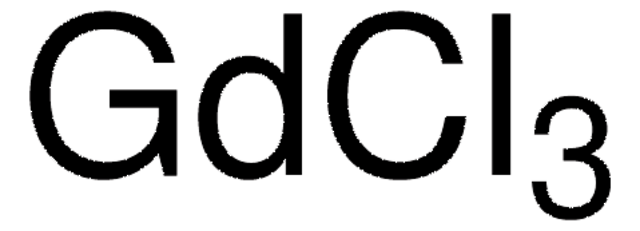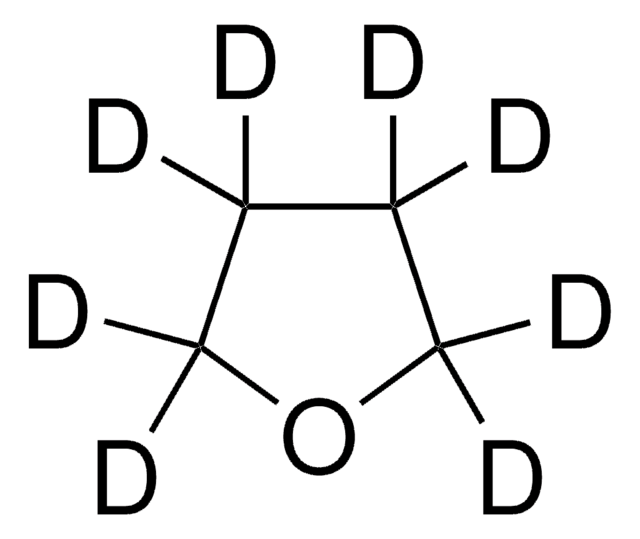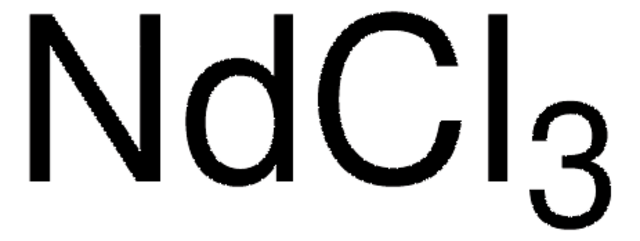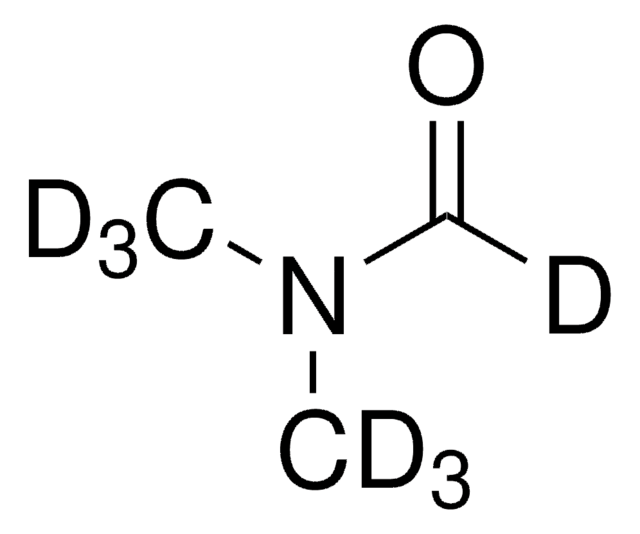735949
Gadolinium(III) chloride
anhydrous, beads, −10 mesh, 99.99% trace metals basis
Synonym(s):
Gadolinium trichloride
Sign Into View Organizational & Contract Pricing
All Photos(1)
About This Item
Linear Formula:
GdCl3
CAS Number:
Molecular Weight:
263.61
EC Number:
MDL number:
UNSPSC Code:
12352302
PubChem Substance ID:
NACRES:
NA.23
Recommended Products
grade
anhydrous
Quality Level
Assay
99.99% trace metals basis
form
beads
particle size
−10 mesh
SMILES string
Cl[Gd](Cl)Cl
InChI
1S/3ClH.Gd/h3*1H;/q;;;+3/p-3
InChI key
MEANOSLIBWSCIT-UHFFFAOYSA-K
Looking for similar products? Visit Product Comparison Guide
Application
Gadolinium Chloride is a commonly used precursor for the formation of MRI contrast agent and can be used as a Diels-Alder catalyst.
Signal Word
Warning
Hazard Statements
Precautionary Statements
Hazard Classifications
Skin Irrit. 2
Storage Class Code
13 - Non Combustible Solids
WGK
WGK 3
Flash Point(F)
Not applicable
Flash Point(C)
Not applicable
Choose from one of the most recent versions:
Certificates of Analysis (COA)
Lot/Batch Number
Don't see the Right Version?
If you require a particular version, you can look up a specific certificate by the Lot or Batch number.
Already Own This Product?
Find documentation for the products that you have recently purchased in the Document Library.
Ma, Y.; et al.
The Journal of Organic Chemistry, 64, 6462-6467 (1999)
Xu, J.; et al.
Journal of the American Chemical Society, 7, 7245-7246 (1995)
T Hasezaki et al.
Die Pharmazie, 66(9), 698-703 (2011-10-27)
Nanomaterials have potential toxicity that is not found in micromaterials, and it is therefore essential to understand their biological activity and potential toxicity. We focused on silica nanoparticles, since it was previously reported that the intravenous administration of silica nanoparticles
Chikara Abe et al.
Journal of applied physiology (Bethesda, Md. : 1985), 114(1), 28-36 (2012-11-10)
Water drinking is known to induce the pressor response. The efferent pathway in this response involves sympathoexcitation, because the pressor response was completely abolished by ganglionic blockade or an α(1)-adrenergic antagonist. However, the afferent pathway in this response has not
Lillian Zhang et al.
The Journal of toxicological sciences, 37(2), 447-453 (2012-04-03)
Liver toxicity is a side effect observed with some herbal treatments, including Piper methysticum. The possible mechanisms responsible include inflammation subsequent to activation of liver macrophages and oxidative damage. Hepatotoxicity of the pharmacologically active component of Piper methysticum (kavalactones) was
Our team of scientists has experience in all areas of research including Life Science, Material Science, Chemical Synthesis, Chromatography, Analytical and many others.
Contact Technical Service





